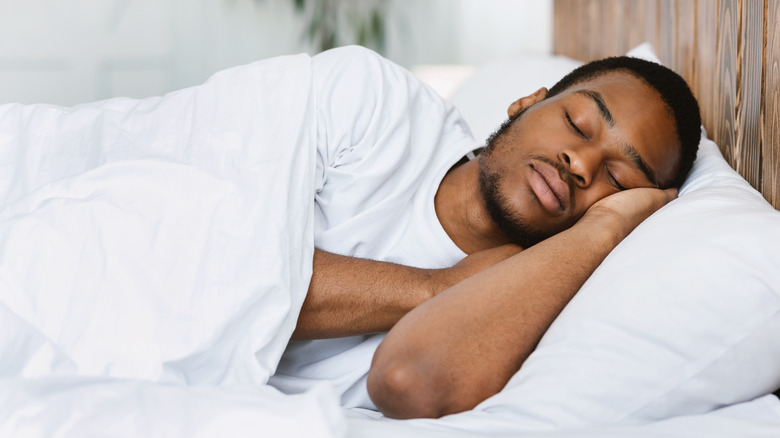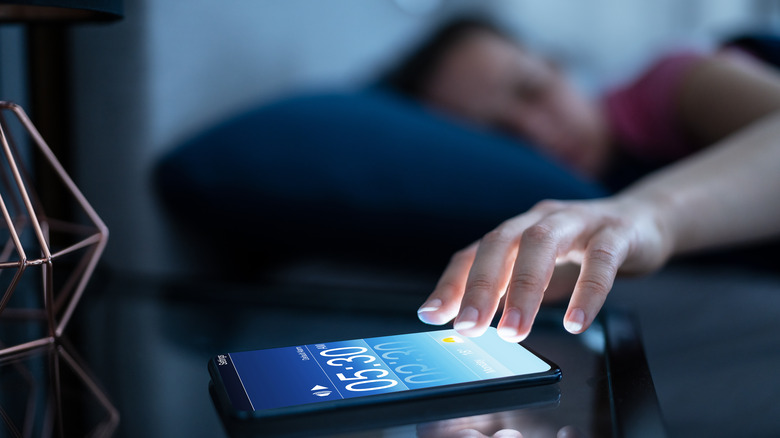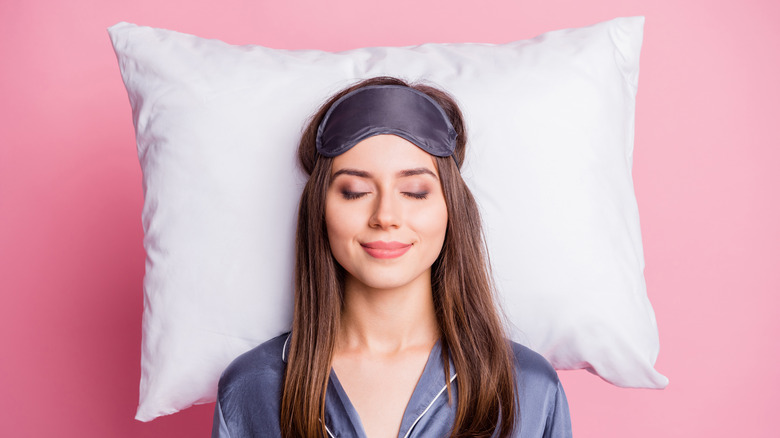The First Thing You Should Do After Taking A Nap
Have you ever taken a nap and felt even more sleepy than you did before? That groggy feeling when you first wake up from a nap is called sleep inertia and can last from 15 to 60 minutes, per a 2016 study published in Industrial Health. It takes some time to transition from sleeping to being awake. So, while that grogginess is completely normal and will always be there when you first wake up, there are some things you can do to lessen it. Still, avoid driving a vehicle or doing anything where you need to make any decisions. Give yourself at least 15 minutes to wake up fully.
While napping isn't for everyone, there are some benefits. According to the National Sleep Foundation, naps can reduce daytime sleepiness and help you get the recommended seven to eight hours of sleep. Napping can also help with memory, improve learning, and regulate emotions. However, you may want to skip them if you have difficulty sleeping at night after taking a daytime nap. If you have trouble falling asleep or staying asleep at night, naps might make that more difficult for you. In that case, it's probably best you don't nap.
Get out of bed right away
Do you hear the alarm go off and immediately press snooze? You drift off for a few more minutes only to press snooze again and keep repeating this cycle until you finally drag yourself out of bed. Snoozing can cause you to feel even more groggy for longer than usual. The Cleveland Clinic points out that hitting snooze interrupts your REM sleep, an essential restorative sleep phase. Waking up during REM sleep can cause your heart to race and blood pressure to rise, a fight or flight response. That extra five to 10 minutes isn't restorative and won't help you feel any more rested. It can become a bad habit, and you should see your doctor if you can't break it. You might have a sleep disorder.
First, make sure you're going to bed early enough to get the recommended seven to eight hours of sleep every night. Per Greatist, not getting enough sleep can make you more likely to hit snooze because the sleep inertia you feel is stronger than when you get enough sleep. You'll also likely feel groggier when you sleep too much too. That's why it's crucial to find that sweet spot and do something energizing after that nap alarm wakes you up.
Do something energizing
Waking up from a nap is hard, but don't hit snooze. Instead, do something energizing and expect to feel some sleep inertia initially, per the Centers for Disease Control and Prevention. As a result, you might feel a little grumpy and disoriented. Try boosting your energy with a coffee before your nap. Caffeine takes about 30 minutes to kick in, so drinking a cup of coffee before you doze off for a short nap is perfect. That caffeine will go into effect just when you're waking up. You'll need at least 100 milligrams of caffeine from coffee, tea, soda, or a caffeine pill. Turn on a bright light or step outside in the sun to help you wake up. Washing your face can also help.
Expose yourself to bright light for one minute to improve your alertness and help that groggy feeling disappear quickly, per a 2016 study published in Industrial Health. You'll still have that 15 minutes or so of sleep inertia, but you should start feeling more awake after that transition time. The same study found that listening to music after waking up can help you feel more energized. Try your favorite music at 60 decibels for 20 minutes.
How to power nap
Avoid napping too long. You'll see the most benefits from a quick, short nap. The Sleep Foundation recommends taking a 10- to 20-minute nap to avoid getting into a REM or deep sleep stage, as it will be more challenging to wake up after. Set your alarm, so you don't accidentally sleep too long. Don't take naps too close to your bedtime. Instead, aim for about halfway between waking up and bedtime. For example, if you go to bed at 10:00 p.m. and wake up at 6:00 a.m., schedule your naps for 2 p.m. in the afternoon.
The Centers for Disease Control and Prevention recommends using an eye mask and earplugs. Doing this will allow you to nap without getting woken up by noise or light. The Mayo Clinic adds that you need to create a restful environment for your nap. Keep it quiet and dark, and limit distractions. Remember to give yourself about 15 minutes to transition between sleeping and waking. Your brain and body need time to adjust.




